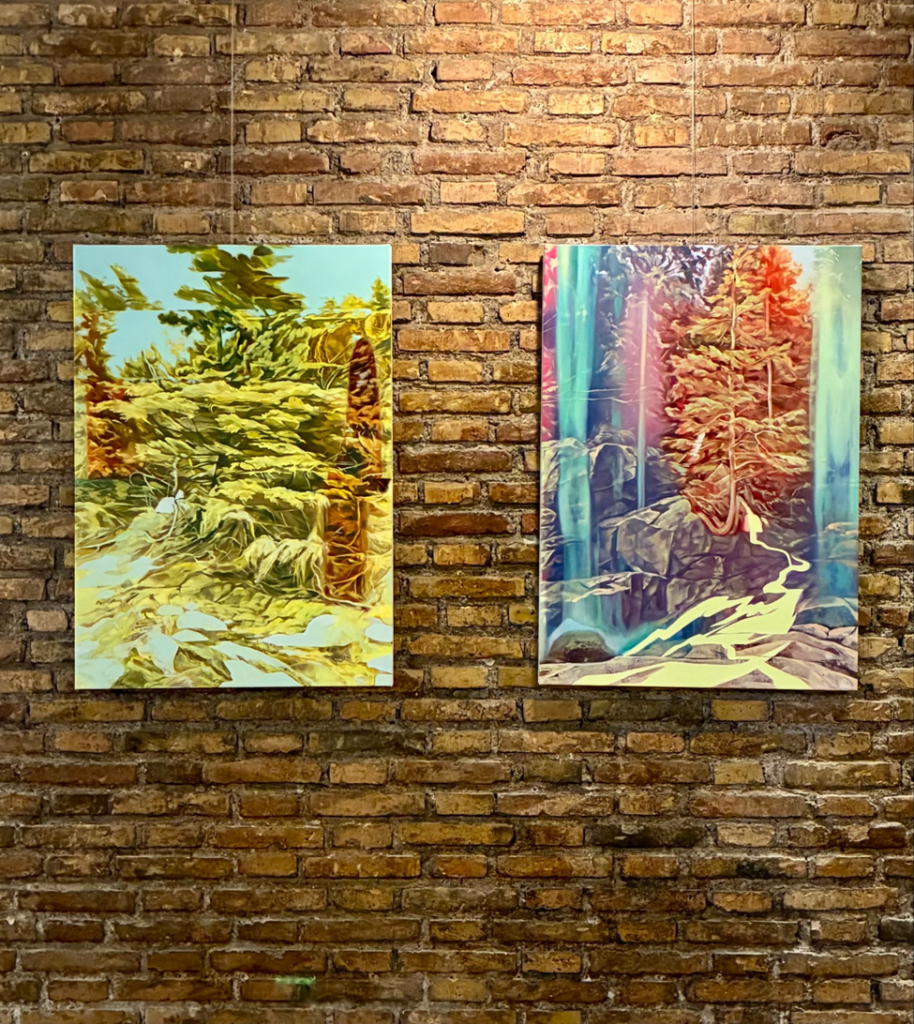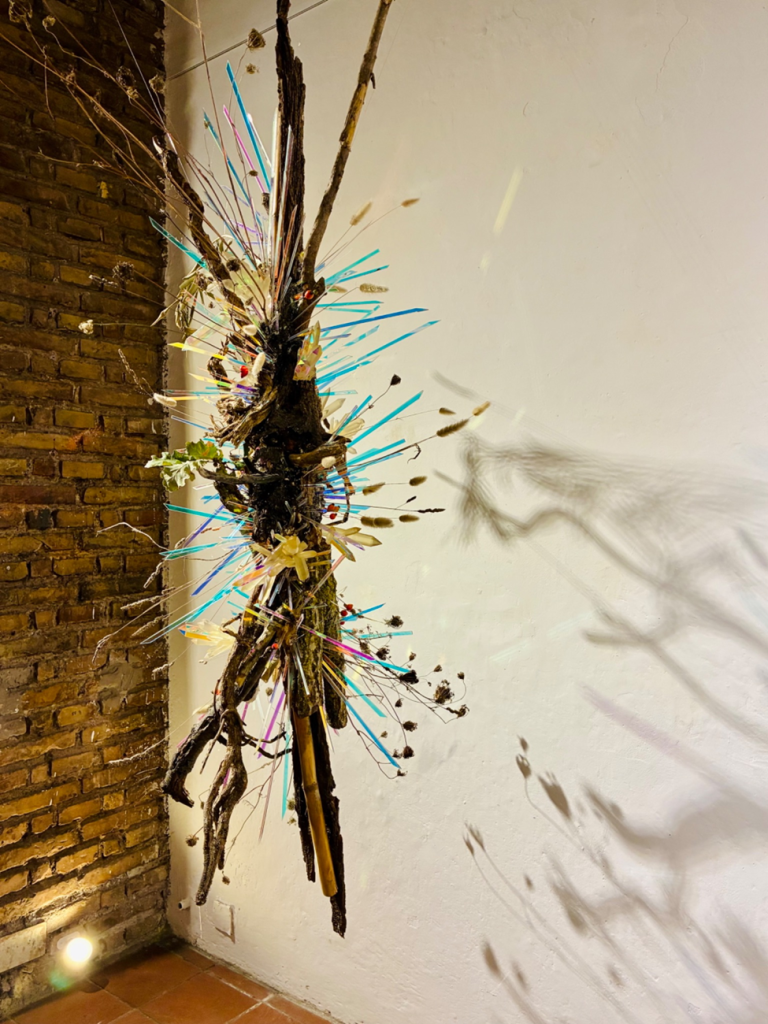In Dialogue

Curator Martina Tanga had been reflecting on the ideas behind Learning With Trees – Artists for Climate and Environmental Solutions long before the exhibition took shape. In 2022, she read Ben Rawlence’s The Treeline, a book tracing how the Boreal forest is shifting under the impact of climate change. That reading sparked the idea that trees could serve as a highly accessible and disarmingly effective way to approach conversations about climate change.
From that point, Tanga began to “learn with trees,” as she describes it—learning from these ancient ancestors while engaging artists and creatives who explore similar ideas in their work. She sees artists as having a unique ability to visualize and materialize concepts that words often struggle to express.
The exhibition, presented at Sala 1 in Rome, brings together Yuko Oda, Cristi Rinklin, Kendall Reiss, and Ash Williams. Tanga envisions this presentation as a “sapling” show — an early stage of something that will continue to grow and take on new forms through an open, collaborative process.
You mention a cross-Atlantic dialogue. Can you elaborate on the role the historic site plays in the show?
The remarkable aspect of this exhibition’s subject, ‘Trees,’ is that it is both universal and geographically specific. Trees grow and cover most habitable zones on the planet, although the flora and fauna in each location can vary wildly.
To host this exhibition in Rome prompts a comparison and dialogue between the trees and forests that animate the New England landscape and those that enliven central Italy and the Mediterranean. It has been fascinating to compare tree species, for instance. Whilst in New England, you have the red maple and eastern white pine, as well as the northern red oak. In Rome, you have the Roman Pines and the “Leccio”, which translates to holm oak, a particular type of evergreen oak tree.
Moreover, in both locations, there is a significant amount of tree activism, particularly around the theme of urban canopy equity. In Boston, for example, I have been in conversation for quite some time with the organization “Speak for the Trees,” while in Rome, I have been meeting folks involved with “Amici dei Alberi.” It’s also been an incredible opportunity to meet artists who incorporate trees into their work here in Rome, such as Marta Abbott and Tommaso Spazzini Villa. We had Oda and Reiss here for the opening in September, and then Rinklin came in mid-October for a gallery talk. It was the perfect opportunity to initiate a cross-cultural dialogue between artists in New England and Rome, as well as promote tree activism.
Please guide us through the exhibition.
The Sala 1 space is a beautiful unfinished church that belongs to the Passionist priest order of the Vatican. It was founded by the artist Tito Amodei in the late 1960s, and three of his monumental abstract wooden sculptures are permanently installed in the gallery. He worked a lot with wood, creating structures that emphasized the spirituality of trees. There is a lovely dialogue between the four contemporary female artists and Amodei’s work, as well as a vision for Sala 1.
The show opens with Reiss’s pieces, which focus on the Tulip and Magnolia trees. Her work has a macro approach to time, tracing a long lineage to the evolution of these tree species 100 million years ago. Reiss has cast their seeds, which brings us to this present moment and has us consider the future. We are in a critical time in terms of climate shifts, and we can have an impact on the stability of the Earth’s future climate.

Next, we come to Rinklin’s paintings, which situate the artist and the exhibition in a New England landscape, as the trees inspired her while she was in Acadia National Park in Maine. Rinlin made these two paintings especially for this exhibition in Rome.

Oda’s two works follow. The sculpture, A Prayer for Now, was also created for this exhibition at Sala 1 and was made onsite using tree roots, branches, and plants from Rome. Oda met with artist Massimo Livadiotti, an expert in Rome’s biodiversity, and foraged for materials in Parco della Caffarella. This piece is paired with two of her paintings, which she brought from Boston, that feature interspecies collaboration.

Lastly, we come to a highly introspective and personal work, Williams’ Dreams of a Hickory Tree. This final work invites viewers to consider the subjecthood of trees, and the particular tree that Williams befriended, as well as to ponder what trees think about and whether they dream. If so, what do their dreams look like? William’s work is centered on building empathy and connection with a wide range of non-human creatures.

Learning With Trees – Artists for Climate and Environmental Solutions at Sala 1, Rome. Artists: Yuko Oda, Kendall Reiss, Cristi Rinklin, Ash Eliza Williams. Curated by Martina Tanga. September 26 – November 8, 2025
About the writer: Etty Yaniv is a Brooklyn-based artist, writer, curator, and founder of Art Spiel. She works in installation, painting, and mixed media, and has shown her art in exhibitions across the United States and abroad. Since 2018 she has published interviews and reviews through Art Spiel, often focusing on underrecognized voices and smaller venues. More about her art can be found at ettyyanivstudio.com and on Instagram @etty.yaniv